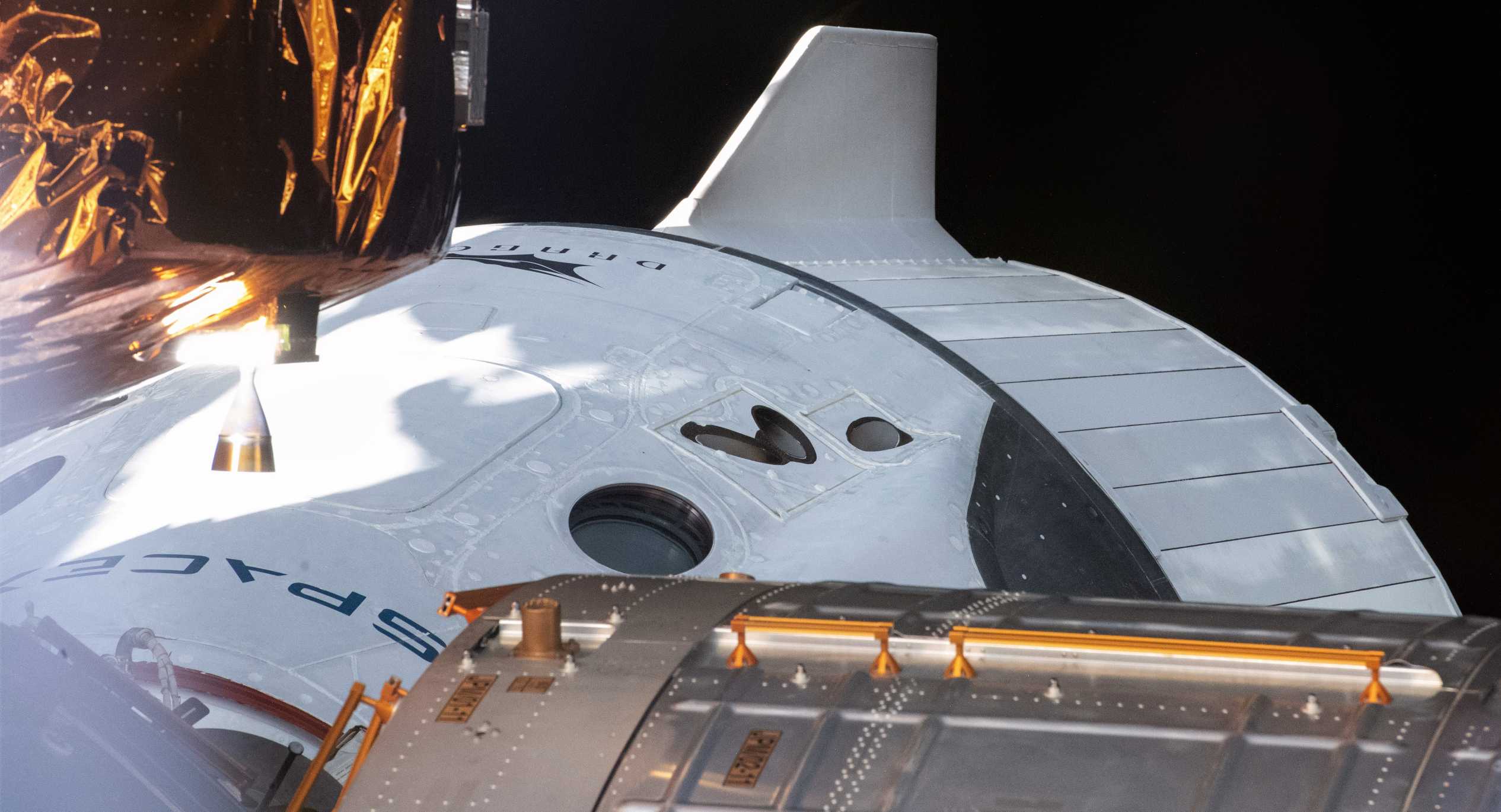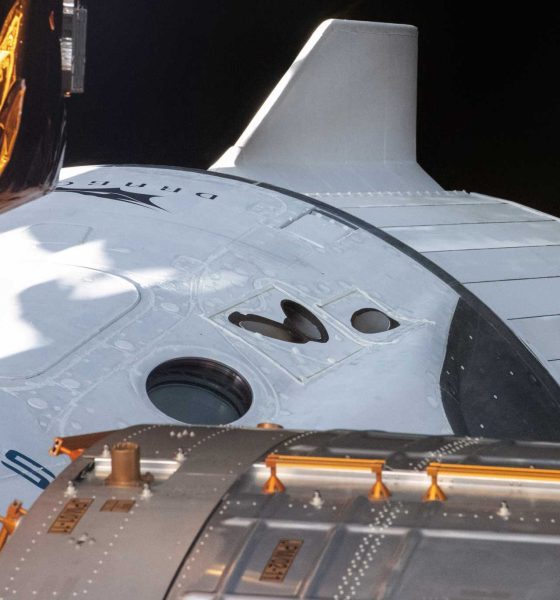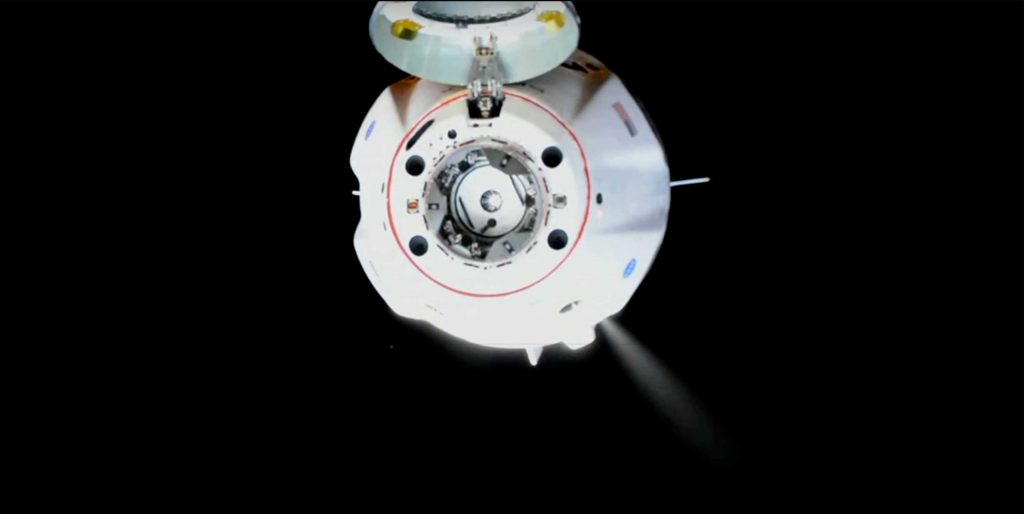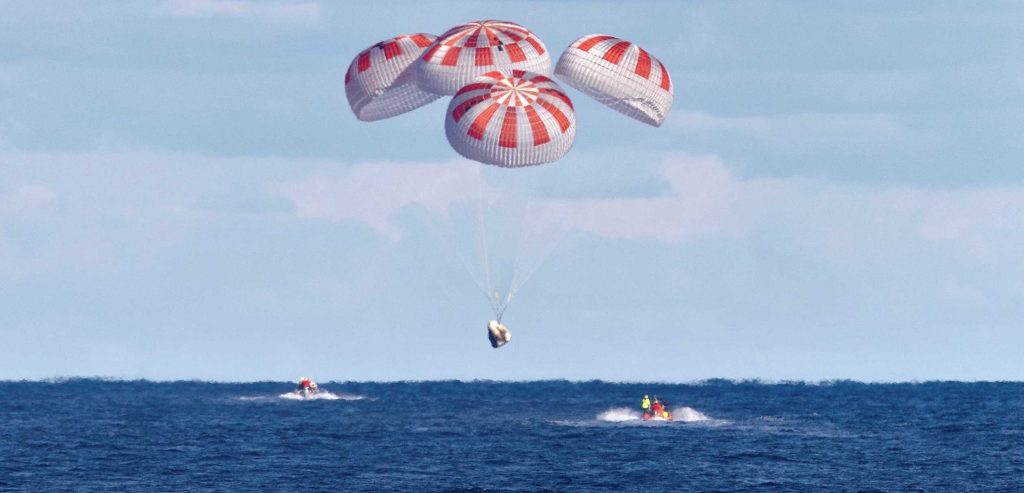

News
SpaceX Crew Dragon spacecraft put through its paces at orbital space station
SpaceX’s first human-proven Crew Dragon spacecraft is being put through its paces in orbit by NASA and even Roscosmos astronauts, according to senior agency leader.
Promoted to lead NASA’s Human Spaceflight Office (HEOMD) days ago, former Commercial Crew Program (CCP) manager Kathy Lueders primarily spoke about her new job – guiding the Artemis Moon landing program – but did manage to answer some questions about her former post. Successfully launched on May 30th, SpaceX’s inaugural Crew Dragon astronaut mission also marked NASA’s first domestic astronaut launch since June 2011, an achievement that unsurprisingly helped catapult Lueders up the ranks just a few weeks later.
Thus far, SpaceX’s first crewed launch is arguably the crowning achievement of both the company and the commercial spaceflight industry it’s largely come to represent. The mission isn’t over yet, however, and International Space Station (ISS) astronauts are reportedly hard at work as they continue to test the historic Crew Dragon spacecraft and push it to a whole new genre of limits.

According to Lueders and backed up by a different NASA executive about a week prior, “Crew Dragon has been doing great” over the ~20 days it’s spent docked to the ISS. NASA and its orbiting astronauts have already done a significant amount of work to verify that the spacecraft is in good health and capable of serving as a lifeboat – at a moment’s notice – for the space station’s crew. In the coming weeks, it’s likely that Bob Behnken, Doug Hurley, Chris Cassidy, and (maybe) a Russian cosmonaut will explicitly rehearse such an emergency, testing Crew Dragon’s ability to depart the ISS in a matter of minutes.
As part of that work, Lueders says NASA astronauts are waking Dragon up and performing checkouts weekly before returning the spacecraft to a mysterious “sleep mode”. In the coming weeks, NASA will further test Crew Dragon by boarding four of the space station’s five current astronauts, including one of two Russian cosmonauts.

SpaceX hasn’t crossed the finish line just yet, though. Lueders also shed additional light on that critical section of Crew Dragon’s astronaut launch debut, confirming that NASA still plans to have the spacecraft return to Earth with Behnken and Hurley in early August. Two opposing goals will continue to tug at that date. On one hand, having both astronauts on the ISS as long as possible helps NASA maximize the efficient use and maintenance of the ultra-expensive orbital laboratory. However, the sooner Crew Dragon is able to complete its first crewed reentry, splashdown, and recovery; the sooner SpaceX and NASA and can fully debrief from the mission, analyze the recovered hardware, and complete paperwork for SpaceX’s next astronaut launch.
Known as Crew-1, SpaceX will send three NASA astronauts and one JAXA (Japanese) astronaut to the ISS for a full six months (~180 days), beginning what could be years of operational Crew Dragon astronaut ferry missions. Crew-1 is currently scheduled to launch no earlier than (NET) August 30th but that date is heavily contingent upon post-Demo-2 reviews and is mainly a placeholder. For now, Crew Dragon C206 is in good health and thus has at least another month and a half to look forward to at the International Space Station.
Check out Teslarati’s Marketplace! We offer Tesla accessories, including for the Tesla Cybertruck and Tesla Model 3.

News
SpaceX shades airline for seeking contract with Amazon’s Starlink rival

SpaceX employees, including its CEO Elon Musk, shaded American Airlines on social media this past weekend due to the company’s reported talks with Amazon’s Starlink rival, Leo.
Starlink has been adopted by several airlines, including United Airlines, Qatar Airways, Hawaiian Airlines, WestJet, Air France, airBaltic, and others. It has gained notoriety as an extremely solid, dependable, and reliable option for airline travel, as traditional options frequently cause users to lose connection to the internet.
Many airlines have made the switch, while others continue to mull the options available to them. American Airlines is one of them.
A report from Bloomberg indicates the airline is thinking of going with a Starlink rival owned by Amazon, called Leo. It was previously referred to as Project Kuiper.
American CEO Robert Isom said (via Bloomberg):
“While there’s Starlink, there are other low-Earth-orbit satellite opportunities that we can look at. We’re making sure that American is going to have what our customers need.”
Isom also said American has been in touch with Amazon about installing Leo on its aircraft, but he would not reveal the status of any discussions with the company.
The report caught the attention of Michael Nicolls, the Vice President of Starlink Engineering at SpaceX, who said:
“Only fly on airlines with good connectivity… and only one source of good connectivity at the moment…”
CEO Elon Musk replied to Nicolls by stating that American Airlines risks losing “a lot of customers if their connectivity solution fails.”
American Airlines will lose a lot of customers if their connectivity solution fails
— Elon Musk (@elonmusk) December 14, 2025
There are over 8,000 Starlink satellites in orbit currently, offering internet coverage in over 150 countries and territories globally. SpaceX expands its array of satellites nearly every week with launches from California and Florida, aiming to offer internet access to everyone across the globe.
Currently, the company is focusing on expanding into new markets, such as Africa and Asia.
News
Tesla Model Y Standard stuns in new range test, besting its Premium siblings
Tesla’s newer vehicles have continued to meet or exceed their EPA estimates. This is a drastic change, as every 2018-2023 model year Tesla that Edmunds assessed did not meet its range estimates.

The Tesla Model Y Standard stunned in a new range test performed by automotive media outlet Edmunds, besting all of its Premium siblings that are more expensive and more luxurious in terms of features.
Testing showed the Model Y Standard exceeded its EPA-estimated range rating of 321 miles, as Edmunds said it is the “longest-range Model Y that we’ve ever put on our loop.” In the past, some vehicles have come up short in comparison with EPA ranges; for example, the Model Y’s previous generation vehicle had an EPA-estimated range of 330 miles, but only drove 310.
Additionally, the Launch Series Model Y, the first configuration to be built in the “Juniper” program, landed perfectly on the EPA’s range estimates at 327 miles.
It was also more efficient than Premium offerings, as it utilized just 22.8 kWh to go 100 miles. The Launch Series used 26.8 kWh to travel the same distance.
It is tested using Edmunds’ traditional EV range testing procedure, which follows a strict route of 60 percent city and 40 percent highway driving. The average speed throughout the trip is 40 MPH, and the car is required to stay within 5 MPH of all posted speed limits.
Each car is also put in its most efficient drive setting, and the climate is kept on auto at 72 degrees.
“All of this most accurately represents the real-world driving that owners do day to day,” the publication says.
With this procedure, testing is as consistent as it can get. Of course, there are other factors, like temperature and traffic density. However, one thing is important to note: Tesla’s newer vehicles have continued to meet or exceed their EPA estimates. This is a drastic change, as every 2018-2023 model year Tesla that Edmunds assessed did not meet its range estimates.
Tesla Model Y Standard vs. Tesla Model Y Premium
Tesla’s two Model Y levels both offer a great option for whichever fits your budget. However, when you sit in both cars, you will notice distinct differences between them.
The Premium definitely has a more luxurious feel, while the Standard is stripped of many of the more premium features, like Vegan Leather Interior, acoustic-lined glass, and a better sound system.
You can read our full review of the Model Y Standard below:
Tesla Model Y Standard Full Review: Is it worth the lower price?
News
Xpeng CEO: Tesla FSD 14.2 has developed “near-Level 4” performance
While acknowledging that imperfections remain, the Xpeng CEO said FSD’s current iteration significantly surpasses last year’s capabilities.

Xpeng CEO He Xiaopeng has offered fresh praise for Tesla’s Full Self-Driving (FSD) system after revisiting Silicon Valley more than a year after his first hands-on experience.
Following extended test drives of Tesla vehicles running the latest FSD software, He stated that the system has made major strides, reinforcing his view that Tesla’s approach to autonomy is indeed the proper path towards autonomy.
Tesla FSD closing in on Level 4 driving
During his visit, He test-drove a Tesla equipped with FSD V14.2. He also rode in a Tesla Robotaxi. Over roughly five hours of driving across Silicon Valley and San Francisco, He said both vehicles delivered consistent and reassuring performance, a notable improvement from his experience a year earlier.
According to He, Tesla’s FSD has evolved from a smooth Level 2 advanced driver assistance system into what he described as a “near-Level 4” experience in terms of capabilities. While acknowledging that imperfections remain, the Xpeng CEO said FSD’s current iteration significantly surpasses last year’s capabilities. He also reiterated his belief that Tesla’s strategy of using the same autonomous software and hardware architecture across private vehicles and robotaxis is the right long-term approach, allowing users to bypass intermediate autonomy stages and move closer to Level 4 functionality.
He previously tested Tesla’s FSD V12.3.6 and Waymo vehicles in California in mid-2024, noting at the time that Waymo performed better in dense urban environments like San Francisco, while Tesla excelled in Silicon Valley and on highways.
Xpeng’s ambitious autonomy roadmap and internal challenge
The Silicon Valley visit also served as a benchmark for Xpeng’s own autonomy ambitions. He stated that Xpeng is looking to improve its VLA autonomous driving system to match the performance of Tesla’s FSD V14.2 within China by August 30, 2026. Xpeng is poised to release its VLA 2.0 smart driving software next quarter, though He cautioned that the initial version will not be able to match FSD V14.2’s capabilities, as noted in a CNEV Post report.
He also added a personal twist to the goal, publicly challenging Xpeng’s autonomous driving team. If the performance target is met by the 2026 deadline, the CEO stated that he will approve the creation of a Chinese-style cafeteria for Xpeng’s Silicon Valley team. If not, Liu Xianming, head of Xpeng’s autonomous driving unit, has pledged to run naked across the Golden Gate Bridge, He noted.








